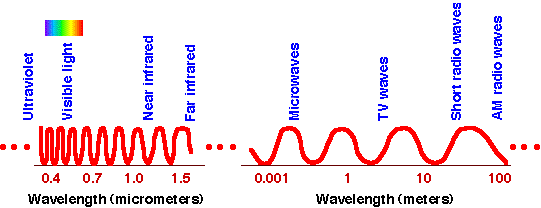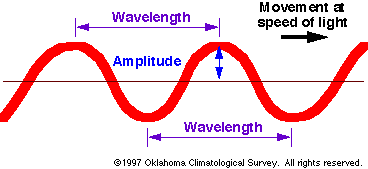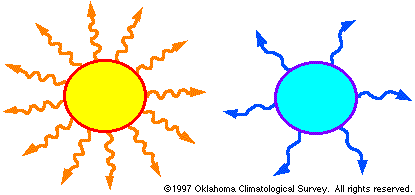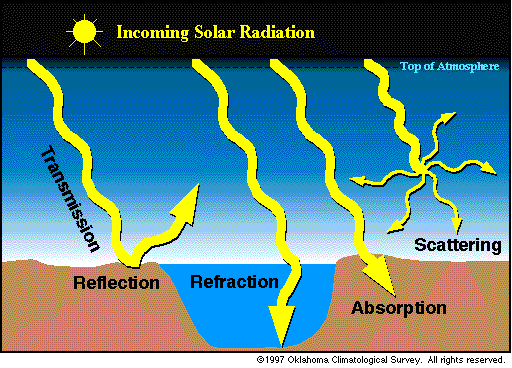|
|
||
|
|
| |
|
|
|
|
|
|
Principle |
Radiation is an essential element of the sun-Earth-atmosphere system. Radiation obeys certain laws of physics. These laws provide us with the knowledge that (a) warmer bodies radiate more energy than cooler bodies, (b) warmer bodies radiate at shorter wavelengths than cooler bodies, (c) good emitters are good absorbers at a particular wavelength and (d) poor emitters are poor absorbers at the same wavelength. |
|
|
|
|
|
|
Figure 1 - Electromagnetic Spectrum | |
|
|
 | |
|
|
Definition |
|
|
|
|
|
|
|
Figure 2- An Electromagnetic Wave | |
|
|
 | |
|
|
Electromagnetic Waves |
|
|
|
|
|
|
|
Figure 3- Physics of Radiation | |
|
|
 | |
|
|
Properties of Radiation |
|
|
|
|
|
|
|
Figure 4- Reflection, Absorption, Scattering, Refraction, and Transmission | |
|
|
 | |
|
|
Radiative Transfer |
|
|
|
|
|
|
|
End |
|
![]()
OK-FIRST
Project, Oklahoma
Climatological Survey,
100 East Boyd Street, Suite 1210, Norman, OK
73019.
Copyright © 1996-2005 Oklahoma Climatological
Survey. All Rights Reserved.
Send comments or questions concerning OK-FIRST to
okfirst@mesonet.org